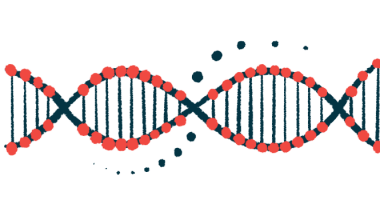SIRT1 and SIRT3 Levels May Be Useful Biomarkers of Disease Severity

In patients with systemic sclerosis, low levels in the blood of two proteins, SIRT1 and SIRT3, are associated with poor lung function, widespread skin scarring, and inflammatory damage to the small blood vessels, a recent study shows.
Results suggest that SIRT1 and SIRT3 may be useful biomarkers to predict disease course and identify patients who are at higher risk of developing more severe symptoms.
The study, “Decreased Serum Levels of SIRT1 and SIRT3 Correlate with Severity of Skin and Lung Fibrosis and Peripheral Microvasculopathy in Systemic Sclerosis,” was published in the Journal of Clinical Medicine.
Systemic sclerosis (SSc), also known as scleroderma, is characterized by the development of scar tissue in the skin and internal organs, such the heart and blood vessels, lungs, and kidneys. Scarring is caused by overproduction and accumulation of the protein collagen.
The two enzymes SIRT1 and SIRT3 regulate certain molecules and pathways that mediate fibrosis (scarring). These proteins have recently been gaining more attention from researchers because of their antifibrotic effects and role in SSc development.
Now, a team of scientists from Italy sought to investigate, for the first time, the levels of circulating SIRT1 and SIRT3 in SSc patients and determine their potential correlation with disease activity and severity.
A total of 80 patients with SSc, 74 women and six men, with a mean age of 58 years, participated in the study. Among these patients, 47 had limited SSc, considered a milder form of SSc, and 33 had diffuse SSc. Healthy age- and sex-matched individuals were also recruited to serve as a control group.
The researchers found that median blood SIRT1 and SIRT3 levels were significantly decreased in SSc patients compared with healthy controls. Additionally, patients with diffuse SSc had lower levels of these proteins compared with participants who had limited SSc.
Using the modified Rodnan skin score, the team evaluated the extent of skin fibrosis. This scale considers skin thickness from zero (normal) to three (severe) on 17 body areas, with a maximum score of 51. Higher mRSS scores were associated with lower levels of SIRT1 and SIRT3 in the blood, the team noted.
Also linked to lower levels of SIRT1 and SIRT3 were other factors, such as the presence of lung fibrosis on a high-resolution computed tomography scan of the chest, and worse pulmonary function, measured by forced vital capacity.
Next, the team determined the degree of microvasculopathy — damage or inflammation of the small blood vessels — using nailfold capillaroscopy. Both SIRT1 and SIRT3 levels correlated with the severity of damage to the small blood vessels.
Statistical analysis revealed that circulating SIRT3 levels better reflected disease activity and severity.
“In this study, we provide the first evidence that circulating levels of both SIRT1 and SIRT3 are decreased in SSc patients,” the scientists wrote.
“Our findings suggest that serum SIRT1 and SIRT3 may represent novel potential biomarkers of increased risk for a more severe, life-threatening SSc disease course,” they concluded.








